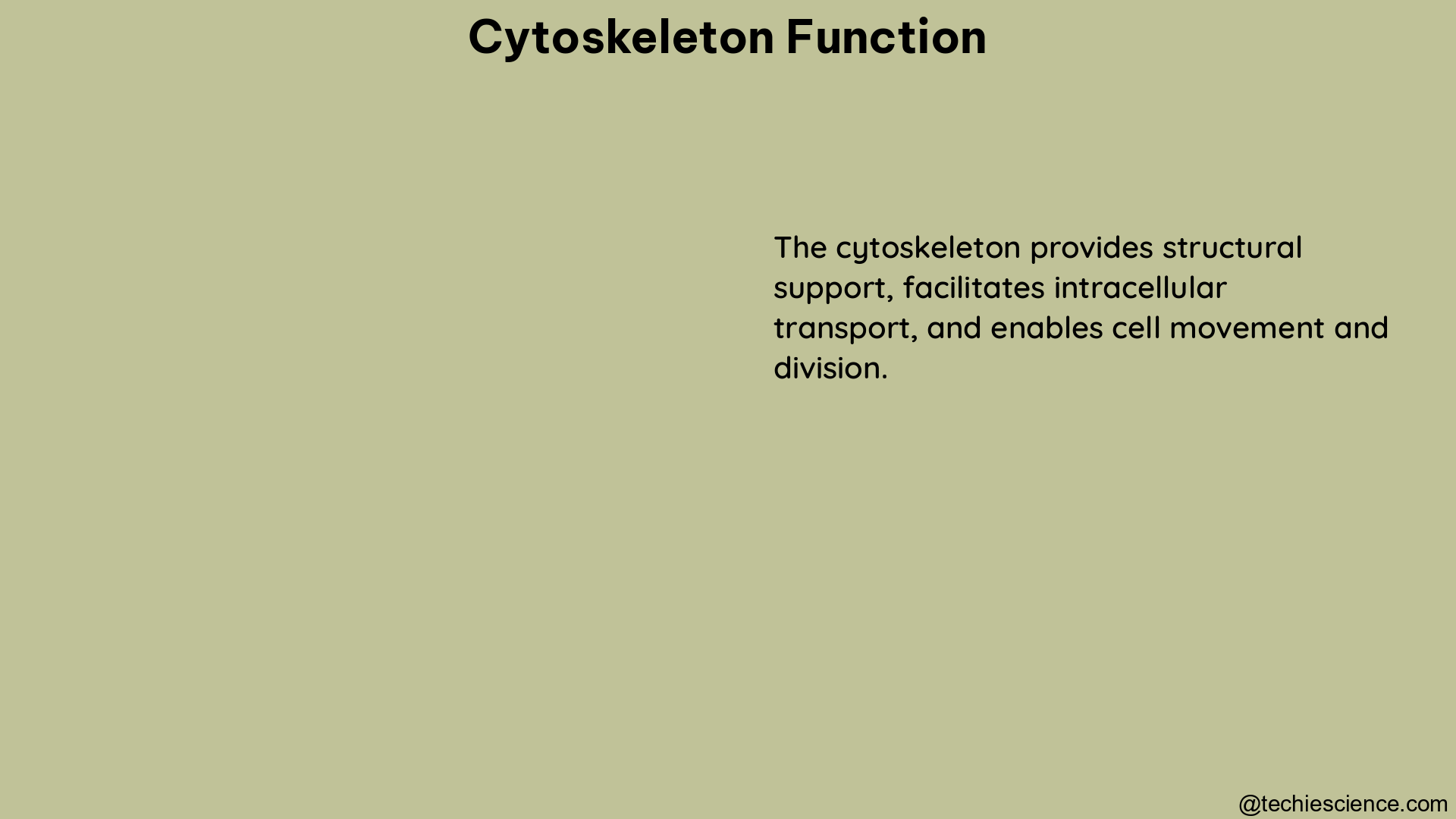The cytoskeleton is a dynamic and intricate network of protein filaments that plays a crucial role in maintaining the shape, structure, and movement of eukaryotic cells. This complex system is composed of three main types of filaments: microtubules, actin filaments, and intermediate filaments, each with its unique structure and function. Understanding the cytoskeleton’s role is essential for comprehending the fundamental processes that govern cellular behavior and homeostasis.
Microtubules: The Cellular Highways
Microtubules are hollow, tube-like structures made up of tubulin dimers. As the largest of the cytoskeletal filaments, they serve as the primary tracks for intracellular transport, facilitating the movement of organelles, vesicles, and other cellular components. Microtubules play a crucial role in:
- Cell Division: During cell division, microtubules form the mitotic spindle, which is responsible for the accurate segregation of chromosomes into the daughter cells.
- Intracellular Transport: Microtubules act as highways, allowing the transport of various cargoes, such as organelles, proteins, and neurotransmitters, throughout the cell.
- Cell Shape Maintenance: Microtubules provide structural support and contribute to the maintenance of the cell’s shape and polarity.
- Ciliary and Flagellar Movement: Microtubules are the primary components of cilia and flagella, which are hair-like structures that protrude from the cell surface and are involved in cell movement and the movement of fluids across the cell surface.
Actin Filaments: The Dynamic Architects

Actin filaments, also known as microfilaments, are thin, rod-like structures composed of actin monomers. As the most dynamic of the cytoskeletal filaments, they are involved in a wide range of cellular processes, including:
- Cell Movement: Actin filaments, in conjunction with motor proteins, drive the crawling motion of cells, such as amoebae and migrating cells.
- Cell Division: Actin filaments play a crucial role in the formation of the contractile ring during cytokinesis, the final stage of cell division.
- Cell Shape Maintenance: Actin filaments contribute to the maintenance of cell shape and provide structural support.
- Cell Signaling: Actin filaments are involved in the organization and regulation of cell surface receptors, such as G protein-coupled receptors, which are important for cell signaling.
Intermediate Filaments: The Cellular Scaffolding
Intermediate filaments are the most diverse of the cytoskeletal filaments, composed of a variety of different proteins. They serve as the structural backbone of the cell, providing:
- Cell Shape Maintenance: Intermediate filaments are responsible for maintaining the overall shape and integrity of the cell, protecting it from physical stress.
- Nuclear Organization: Intermediate filaments are involved in the organization and positioning of the cell’s nucleus.
- Cell Movement: Intermediate filaments play a role in the movement of cells and the attachment of cells to their extracellular matrix.
- Cellular Stress Response: Intermediate filaments are involved in the cell’s response to various stressors, such as mechanical stress, heat, and oxidative stress.
Quantifying Cytoskeleton Dynamics
The cytoskeleton is a highly dynamic structure, constantly changing in response to signals from within and outside the cell. These changes can be quantified using a variety of techniques, including:
- Differential Dynamic Microscopy (DDM): DDM uses the motion of tracer particles to measure the dynamics of the cytoskeleton, providing insights into the mechanisms of cell movement and the regulation of cell shape.
- Fluorescence Recovery After Photobleaching (FRAP): FRAP measures the recovery of fluorescence in a region of interest after it has been bleached with a laser, allowing the study of the dynamics of cytoskeletal filaments.
- Fluorescence Resonance Energy Transfer (FRET): FRET measures the energy transfer between two fluorescent molecules, enabling the investigation of the interactions and dynamics within the cytoskeleton.
These techniques have been instrumental in advancing our understanding of the cytoskeleton’s role in cellular processes, from cell migration to cell signaling and beyond.
In conclusion, the cytoskeleton is a complex and dynamic network of protein filaments that plays a vital role in maintaining the shape, structure, and movement of eukaryotic cells. By understanding the unique functions of microtubules, actin filaments, and intermediate filaments, as well as the techniques used to study their dynamics, we can gain valuable insights into the fundamental mechanisms that govern cellular behavior and homeostasis.
References:
– Quantifying Cytoskeleton Dynamics Using Differential Dynamic Microscopy. Hannah N. Verwei, Gloria Lee, Gregor Leech, Irene Istúriz Petitjean, Gijsje H. Koenderink, Rae M. Robertson-Anderson, Ryan James McGorty.
– Microtubules, Filaments | Learn Science at Scitable – Nature.
– Proteomic approaches to understanding the role of the cytoskeleton in host-defense mechanisms.
– Simple methods for quantifying super-resolved cortical actin.
– A quantitative measure for alterations in the actin cytoskeleton investigated with automated high‐throughput microscopy. Weichsel Julian, Herold Nikolas, Lehmann Maik J., Kräusslich Hans‐Georg, Schwarz Ulrich S.

The lambdageeks.com Core SME Team is a group of experienced subject matter experts from diverse scientific and technical fields including Physics, Chemistry, Technology,Electronics & Electrical Engineering, Automotive, Mechanical Engineering. Our team collaborates to create high-quality, well-researched articles on a wide range of science and technology topics for the lambdageeks.com website.
All Our Senior SME are having more than 7 Years of experience in the respective fields . They are either Working Industry Professionals or assocaited With different Universities. Refer Our Authors Page to get to know About our Core SMEs.